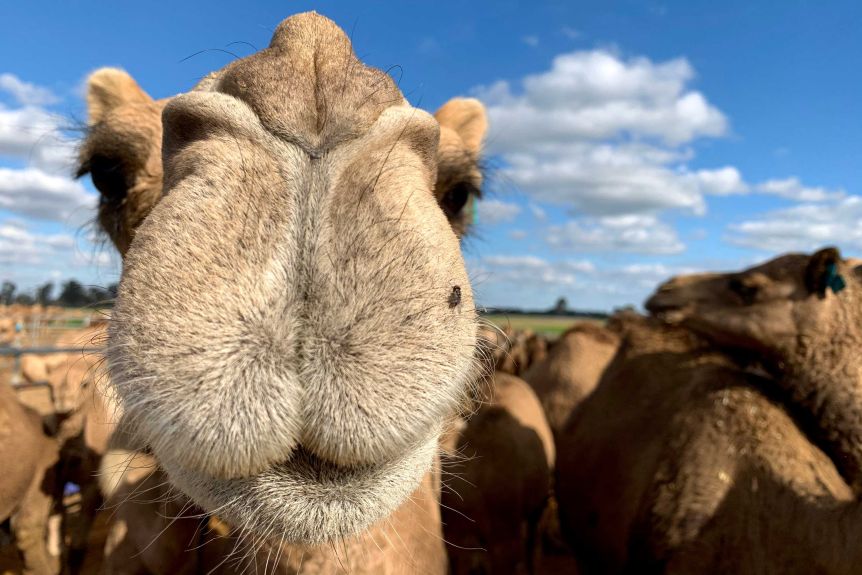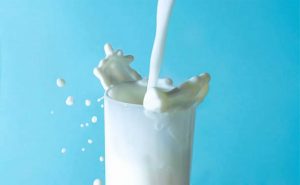Key points:
Megan Williams’ camel farm is set to milk its largest number of camels ever
The camel’s trust needs to be built to allow the milk to ‘come down’
The majority of milk produced is turned into powder
Growing up on a dairy farm in Kyabram, she had to learn the ins-and-outs of calving cows; but this winter is a little different.
After years of preparation, she is now entering her biggest camel calving season yet.
“We’re probably expecting around 100 births — we’ve started calving early, so we’ve already got about 10 to 15 babies running around,” Ms Williams said.
“We’re set to be milking our largest number of camels yet.”
Pregnant for 12 to 14 months
Ms Williams said camels were pregnant for between 12 to 14 months, and the delivery was a little easier than what people may think.
“It’s different to traditional dairy farmers. We don’t have to go out in the middle of the night and pull calves and assist. We’ve only ever had one assistance needed,” she said.
“The camels are really hardy like that, by the time you see some feet sticking out, it’s usually half an hour before a baby is on the ground and up and drinking within an hour or two.
“The camels make it look easy, which I’m sure it’s not.”
She said she still needed to keep a close on them for the first few days after birth, to make sure they drank from their mother to bond and absorb nutrients.
‘The milking process is much the same’
Although cows and camels have stark differences, the milking process is much the same.
“We still practice a lot of the same measures. We’re dairying essentially, but obviously, we’ve changed the animal,” she said.
“They still have four teats and we manage to milk them the same way with milking cups and lines — it’s just the training process can be lengthy.
“It’s built on trust, camels will not let down their milk physically unless they’re relaxed.”
Despite COVID-19 shutdowns impacting her tourism side of the business, she continues to see a growing demand for camel milk.
“While it’s disappointing for people to not be able to share the love on the farm, it has in a way made it easier for us to get out and concentrate on the camels,” she said.
“At the moment we’re definitely going to produce around eight to 10,000 litres a month, and then over the next 12 months, we’re set to double.
“The majority of our milk will turn into powder, and then we do a range of skincare products.
“We have also dabbled in a bit of feta and chocolate — I’m a chocolate lover, we just had to try it.”













